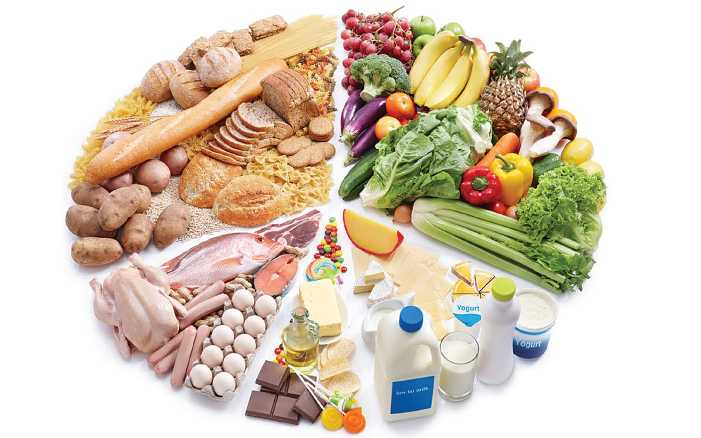Eating for your 40s and 50s
The 40s and 50s spell mid-life going onto your sunset years. It is the time to invest in the remaining years


The 40s and 50s spell mid-life going onto your sunset years. It is the time to invest in the remaining years of your life if you are to go through old age still enjoying good health. In this second and final part of our advice on what to eat for your age, discover what should be in your plate during these crucial years…
HORMONAL CHANGING 40s
By the time you hit 40, you are likely to be at the peak of your career or well settled in your business venture. Plus, if you have children, they are probably still at home in pre-school, primary or even high school. If they are teenagers, they may be eating all the wrong foods teenagers love and you may be tempted to join them. The 40s are certainly a very busy time for both men and women. For the woman, the major issue is hormonal change. The average age for women to go through menopause is 51 years, and you can be peri-menopausal, meaning your hormone levels are changing, for up to 10 years prior to that. Irregular periods and the odd hot flashes are often the first signs, but you may also notice other signs, such as mood swings and vaginal dryness. Age and changing hormones can also mean a slower metabolism and weight gain for both men and women and the skin can start to lose elasticity.
Eating for your 40s
Eat low glycemic index (GI) foods. As your hormone levels change, you may find you start to gain weight around your middle more easily. Carbohydrates that release their glucose fast, such as white bread, pasta and sugary foods, can encourage fat storage in this area. These foods can also cause wrinkles and skin sagging through a process known as glycation, in which collagen fibres stiffen. So stick to wholegrain bread, brown rice and wholemeal pasta, and aim for a serving of lean protein at every meal. This slows the release of glucose into your bloodstream.
Up your phytoestrogens. These are especially important for women in the run-up to menopause. Beans, lentils, chickpeas and soya products supply plant oestrogens, which help keep you in balance. Aim for at least a serving each day. Try adding beans to soups, bulking up stews with lentils and 3replacing dairy milk with soya milk.
Choose the right fats. You may have been able to get away with full-fat dairy and red meat when you were younger, but at this age it pays to start minimising it. Not only are you more likely to gain weight now, reducing saturated fats will help reduce your risk of heart disease as you approach middle age. Instead, increase your omega-3 fats found in oily fish and linseeds. You can eat up to four servings of oily fish a week unless you are trying to conceive, in which case you keep to two.
THE SETTLING DOWN 50s
The 50s is the age when most people begin to settle down, look back and evaluate their past and plan for the future. But it could also be a time when you may be dealing with a lot of changes, including the onset of menopause for the woman, to coping with an empty nest if children have started leaving home for boarding school or to be on their own. At some point in this decade, a woman will have had her last period, and while you are now free of hormonal fluctuations and unpleasant pre-menstrual syndrome (PMS) symptoms, the lack of oestrogen means you have other issues to consider – a raised risk of heart disease and osteoporosis, as oestrogen helps protect your body against these. The risk of cancer increases at this age, too, and with many cancers being lifestyle related, it pays to choose the right foods to cut your chances.
Eating for your 50s
Up your fibre intake. A high fibre diet is important for helping to carry unhealthy LDL cholesterol out of the body, keeping blood pressure low, and reducing your risk of heart disease. All fruits and vegetables are high in fibre, along with pulses, such as beans and whole grains such as oats, rye, barley and brown rice. Root crops such as yams, sweet potatoes, arrowroots and cassava, are also high in fibre.
Focus on antioxidants. A diet high in these nutrients may help protect your body against the inflammation linked to heart disease and cell damage, which can increase your risk of cancer. Fruits, especially berries, green tea, prunes, spices such as turmeric, fresh herbs and dark chocolate (one to two squares a day because it is high in fat and sugar) are excellent antioxidant foods. If you enjoy a tipple, the good news is that you can have a glass of red wine without worrying – it’s a great source of antioxidants and, post-menopause, may have some heart benefit, though only when drank in moderation.
Minimise salt intake. Salt can contribute to high blood pressure, which affects one in three adults. The best way to reduce salt is to cut it down on processed foods. The majority of salt in our diet is hidden in ready meals, biscuits, cakes, crisps, processed meats such as bacon, sausages, ham and so on. Reduce these and you immediately slash your salt intake. Also avoid adding salt on the table and experiment with flavouring food with herbs and spices instead of salt when cooking.
Buy a copy of the October issue to read this and many more





